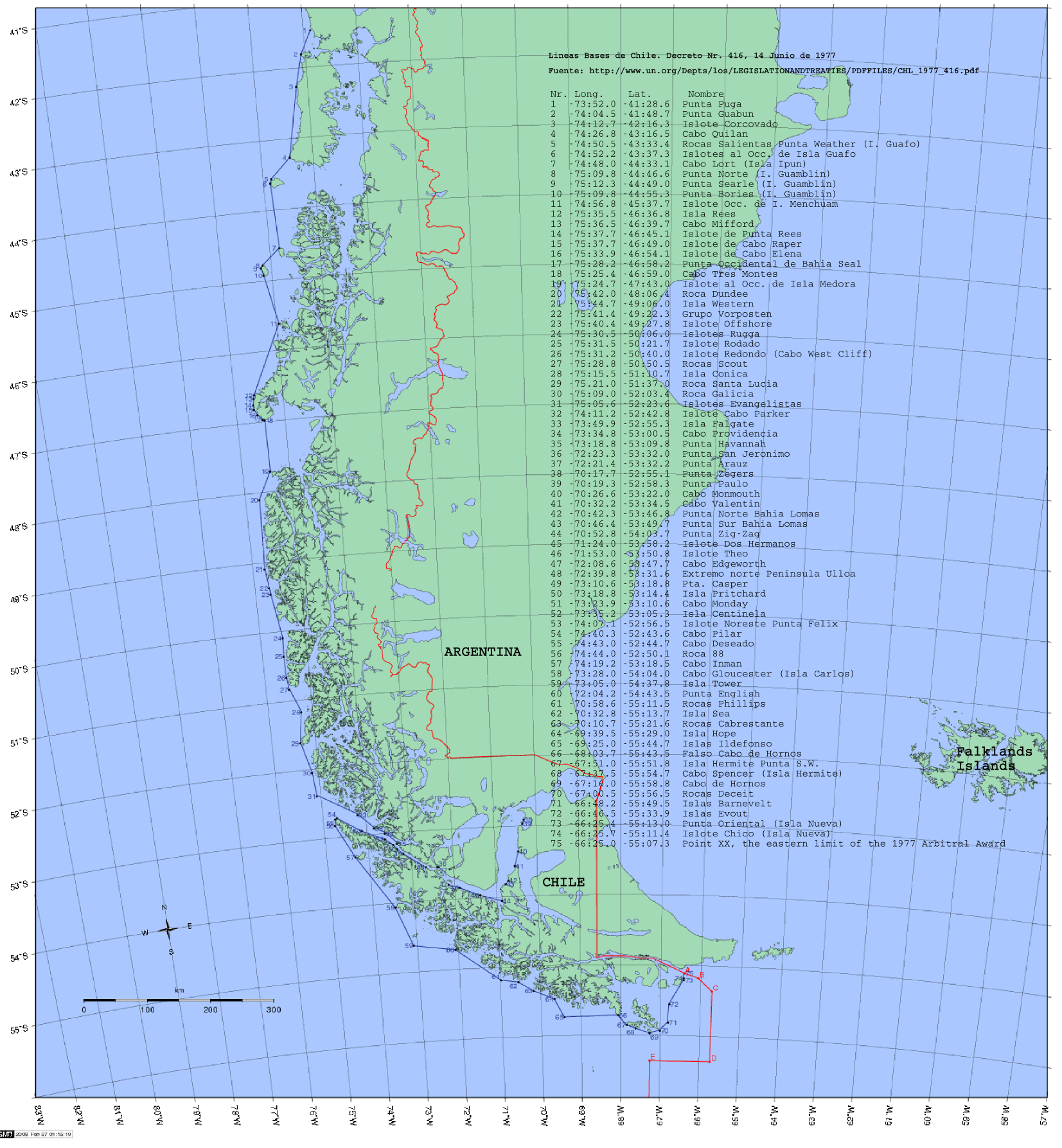Straight Baselines on:
[Wikipedia]
[Google]
[Amazon]
A baseline, as defined by the 
 The following methods are used to measure a baseline under
The following methods are used to measure a baseline under
United Nations Convention on the Law of the Sea (UNCLOS) – Part II
Hydrography Law of the sea Curves
United Nations Convention on the Law of the Sea
The United Nations Convention on the Law of the Sea (UNCLOS), also called the Law of the Sea Convention or the Law of the Sea Treaty, is an international treaty that establishes a legal framework for all marine and maritime activities. , 169 sov ...
, is the line (or curve
In mathematics, a curve (also called a curved line in older texts) is an object similar to a line, but that does not have to be straight.
Intuitively, a curve may be thought of as the trace left by a moving point. This is the definition that ...
) along the coast from which the seaward limits of a state's territorial sea and certain other maritime zones of jurisdiction
Jurisdiction (from Latin 'law' and 'speech' or 'declaration') is the legal term for the legal authority granted to a legal entity to enact justice. In federations like the United States, the concept of jurisdiction applies at multiple level ...
are measured, such as a state's exclusive economic zone
An exclusive economic zone (EEZ), as prescribed by the 1982 United Nations Convention on the Law of the Sea, is an area of the sea in which a sovereign state has exclusive rights regarding the exploration and use of marine natural resource, reso ...
. Normally, a sea baseline follows the low-water line of a coastal state. This is either the low-water mark closest to the shore or an unlimited distance from permanently exposed land, provided that some portion of elevations exposed at low tide but covered at high tide (such as mud flats) is within 3 nautical miles (5.6 kilometres; 3+1⁄2 statute miles) of permanently exposed land. When the coast is deeply indented, has fringing islands or is highly unstable, ''straight'' baselines may be used.

Measurement of baseline
 The following methods are used to measure a baseline under
The following methods are used to measure a baseline under United Nations Convention on the Law of the Sea
The United Nations Convention on the Law of the Sea (UNCLOS), also called the Law of the Sea Convention or the Law of the Sea Treaty, is an international treaty that establishes a legal framework for all marine and maritime activities. , 169 sov ...
1982.
Normal baseline
Except where otherwise provided in this Convention, the normal baseline for measuring the breadth of the territorial sea is the low-water line along the coast as marked on large-scale charts officially recognized by the coastal State.Article 5 (UNCLOS 1982)Reefs
In the case of islands situated on atolls or of islands having fringing reefs, the baseline for measuring the breadth of the territorial sea is the seaward low-water line of the reef, as shown by the appropriate symbol on charts officially recognized by the coastal State.Article 6 (UNCLOS 1982)Straight baselines
# In localities where the coastline is deeply indented and cut into, or if there is a fringe of islands along the coast in its immediate vicinity, the method of straight baselines joining appropriate points may be employed in drawing the baseline from which the breadth of the territorial sea is measured. # Straight baselines shall not be drawn to and from low-tide elevations, unless lighthouses or similar installations which are permanently above sea level have been built on them or except in instances where the drawing of baselines to and from such elevations has received general international recognition. # Where the method of straight baselines is applicable under paragraph 1, account may be taken, in determining particular baselines, of economic interests peculiar to the region concerned, the reality and the importance of which are clearly evidenced by long usage. # The system of straight baselines may not be applied by a State in such a manner as to cut off the territorial sea of another State from the high seas or an exclusive economic zone.Article 7 (UNCLOS 1982)See also
*Territorial waters
Territorial waters are informally an area of water where a sovereign state has jurisdiction, including internal waters, the territorial sea, the contiguous zone, the exclusive economic zone, and potentially the extended continental shelf ( ...
* Exclusive economic zone
An exclusive economic zone (EEZ), as prescribed by the 1982 United Nations Convention on the Law of the Sea, is an area of the sea in which a sovereign state has exclusive rights regarding the exploration and use of marine natural resource, reso ...
* Continental shelf
A continental shelf is a portion of a continent that is submerged under an area of relatively shallow water, known as a shelf sea. Much of these shelves were exposed by drops in sea level during glacial periods. The shelf surrounding an islan ...
* International waters
The terms international waters or transboundary waters apply where any of the following types of bodies of water (or their drainage basins) transcend international boundaries: oceans, large marine ecosystems, enclosed or semi-enclosed region ...
* United Nations Convention on the Law of the Sea
The United Nations Convention on the Law of the Sea (UNCLOS), also called the Law of the Sea Convention or the Law of the Sea Treaty, is an international treaty that establishes a legal framework for all marine and maritime activities. , 169 sov ...
Notes
References
{{ReflistUnited Nations Convention on the Law of the Sea (UNCLOS) – Part II
Hydrography Law of the sea Curves